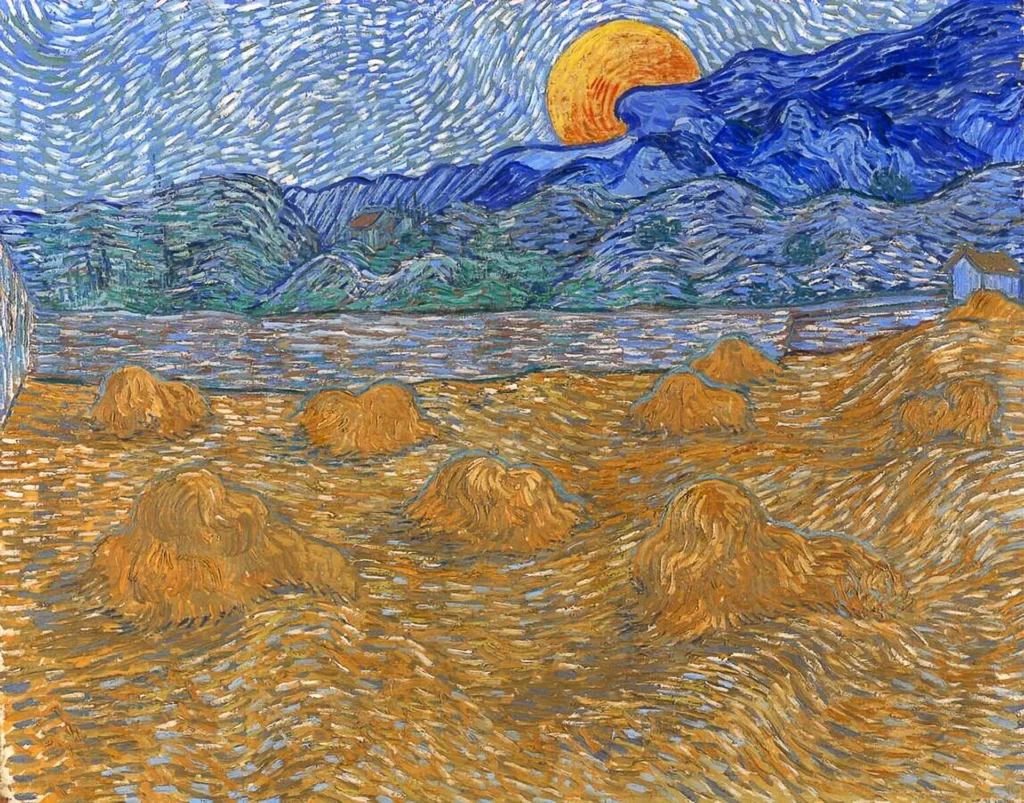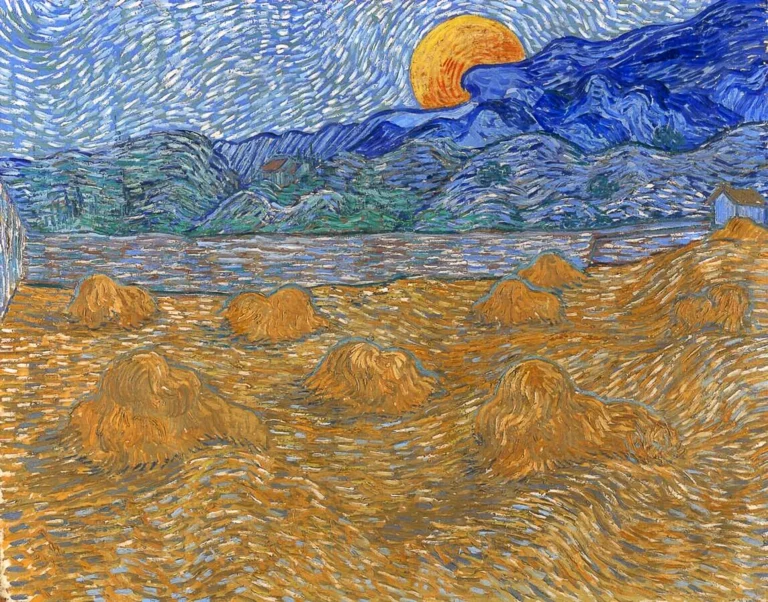Landscape With Wheat Sheaves And Rising Moon (1889)
Created in July 1889 while Vincent van Gogh was residing in the asylum at Saint-Rémy-de-Provence, Landscape with Wheat Sheaves and Rising Moon offers a stunning representation of the countryside under a luminous moonlight. The composition features luminous wheat sheaves and a rising moon over the Alpilles, rendered with Van Gogh’s characteristic swirling brushstrokes. This painting highlights Van Gogh's attempt to portray a personal sentiment within an atmosphere inspired by the writings of influential figures like Walt Whitman and Thomas Carlyle.
July 1889
About the Artwork
The story behind Landscape with Wheat Sheaves and Rising Moon is deeply entwined with Van Gogh's tumultuous life. Painted during a period of both creativity and struggle, Van Gogh sought solace in nature while at the asylum. This artwork reflects his fascination with the celestial, inspired by Whitman and Carlyle's descriptions of night as a representation of eternity. Van Gogh illustrated a personal narrative of longing and adoration, grabbing the viewer's attention with vivid depictions of wheat illuminated by the moon. While he worked in his studio, drawing from memory rather than direct observation, he was critical of the exaggerated composition. Ultimately, this painting serves as a testament to Van Gogh's innovative spirit and his continuous quest for emotional depth in his art.
Did You Know
Van Gogh’s engagement with literature, particularly the works of Walt Whitman and Thomas Carlyle, heavily influenced his artistic expression. Their interpretations of nature and night inspired him to weave a narrative of eternity and spiritual longing into his landscapes.
Unlike many of his iconic works, this painting was primarily created in Van Gogh’s studio. He was encouraged by fellow artist Paul Gauguin to rely on his memory and imagination rather than working en plein air, revealing his experimental approach during this creative phase.
Today, Landscape with Wheat Sheaves and Rising Moon is a treasured piece within the Kröller-Müller Museum’s collection, reflecting Van Gogh’s legacy and the significant role his works play in the history of Western art.










